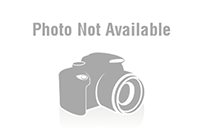Bhavna Guduguntla
asked if I could help a friend with this poster (click to enlarge):
A few weeks ago, I mentioned that your title (headline) is
90% of your communication effort. This poster would benefit greatly by taking that one board. The title here is probably one of the
least visible things on this poster, for two reasons.
First, it�s competing with
a bunch of logos, which are sitting in the poster�s prime real estate: the upper right corner.
Second, the title is thin white text on a light gray background. Those facts alone make the title inconspicuous, but it�s made even
worse because it�s surrounded by several black elements: one of the logos, and the authors� last names. Your eyes are drawn to the highest contrast elements, and it�s not the title. And darn it, you should see the title.
I like the way the authors� last names are set in black. The last names on a scientific poster are important, because scientific papers are normally referenced by last names. If the names were properly subordinate to the title, this would be an nice design choice.
The main text looks crowded and ill-chosen. The
boxes have so much text that the words seem ready to burst out of their boxes. Then, the text is sometimes centered, and sometimes left aligned. Consistency always helps give the appearance of considered, ordered decisions, which is what you want for a research poster. Stick to one format for all text!
The molecule between the two columns is distracting. It sits uncomfortably between the introduction and the data, but doesn�t clearly belong to either section. It�s also crushing up against those other sections.
There are two columns in the middle of the poster: �Log� and �Activity�. I am wondering if these are
supposed to be one table? If so, they should touch, and not have a solid band of the background colour between them.
Tables are generally not the best way to show data, and I wonder if there is any way to show that as a graph.
I am worried that the graphs at the bottom ones will be hard to see. They are on a coloured background, which reduces their contrast and visibility immediately. And the situation is made worse by the very fine lines used for the graph.
















